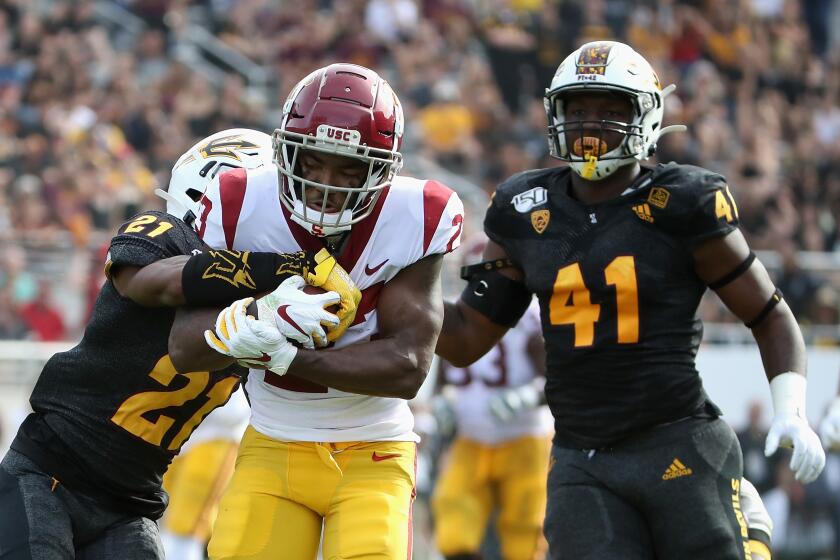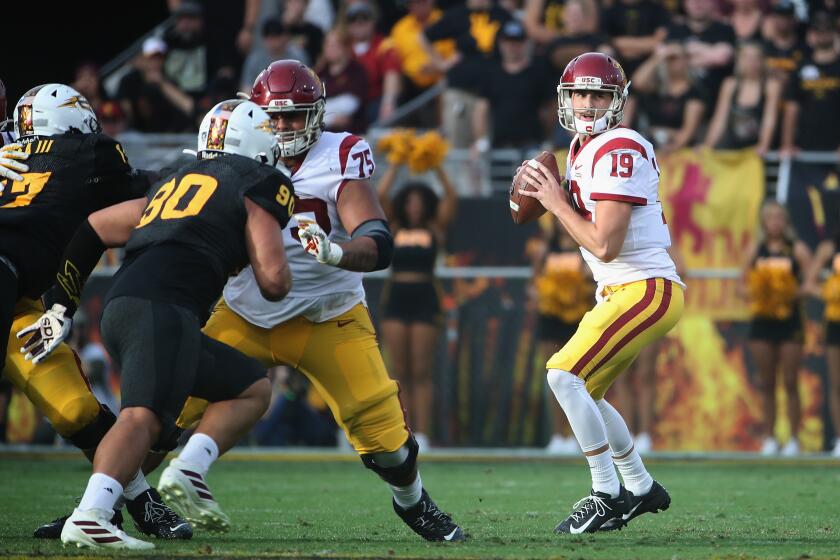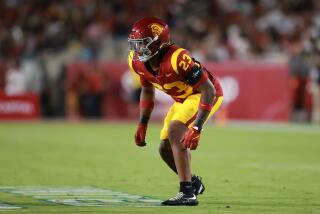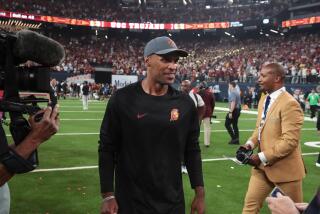Clancy Pendergast was supposed to fix USCâs defense. Instead, itâs stuck in decline
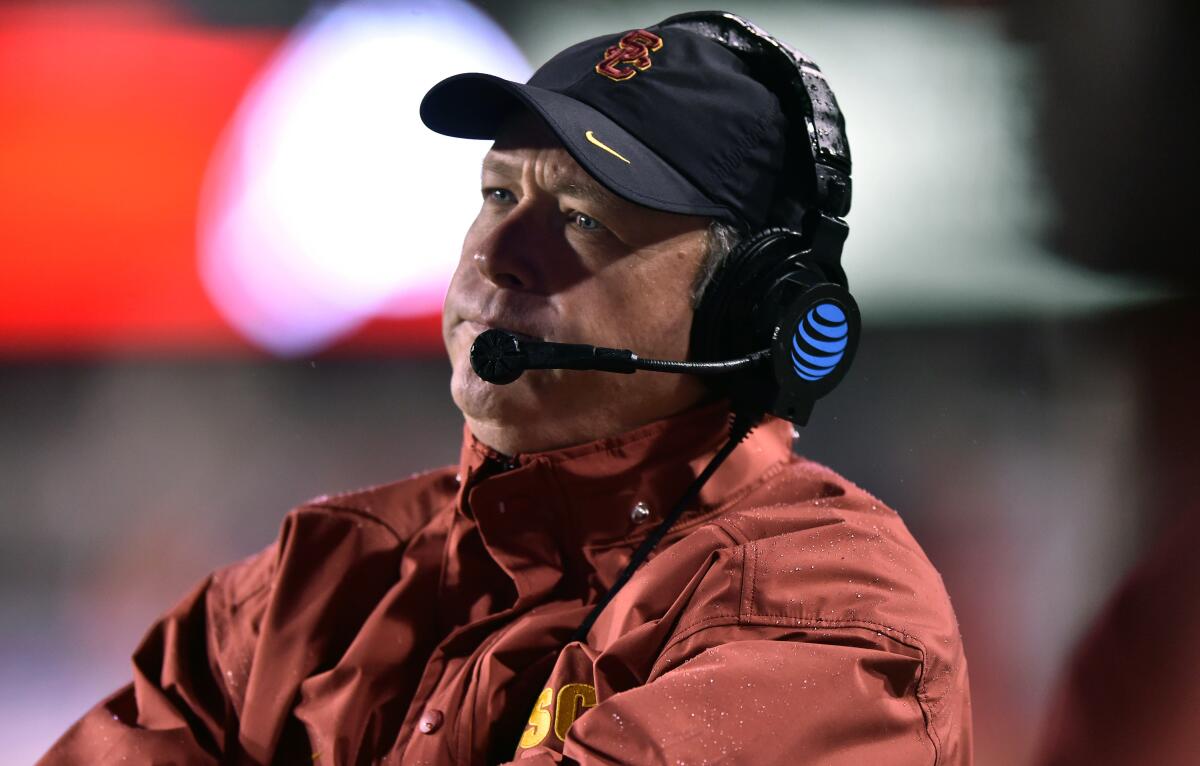
Just six days after his interim tag was removed in December 2015, new USC coach Clay Helton announced the firing of four assistants. One of them was Justin Wilcox, the Trojansâ defensive coordinator.
The move was not unexpected. Wilcoxâs two seasons as coordinator had been mostly underwhelming, as his USC defenses netted near-career worsts for the coach in points allowed, yardage allowed, and completion percentage. The prevailing memory of his tenure would prove to be the profanity-laced, press box tirade heâd launched into within earshot of reporters during the Pac-12 title game. The next day, Wilcox was fired.
With his replacement came hope of returning USCâs defense to its past glories. Clancy Pendergast had done it before, after all. During his first stint as coordinator in 2013, Pendergast oversaw a dramatic improvement in USCâs defense. When he left for a job with the San Francisco 49ers after the season, giving way to Wilcox, it took a dramatic step back.
So with Wilcox out, Helton returned to his predecessor, hoping to recapture what had been lost.
Four years later, as USC heads to Cal this weekend with its coachâs future in question, the Trojans defense is still searching. Over four seasons, the defense Pendergast was supposed to turn around has experienced a steady, annual decline in both total defense and scoring defense, while Wilcox, now Calâs head coach, boasts a defense thatâs allowing eight fewer points and 39 fewer yards than USC on a per-game basis.
In nearly every statistical category, the Trojans are worse off defensively than they were in Wilcoxâs final season in 2015.
Whether those reinforcements in the run game come this week or not, theyâll be joined no matter what by Kenan Christon, who, after an impressive month, will play out the rest of his freshman season, relinquishing his ability to redshirt.
There are logical reasons for that decline, among them an unfortunate combination of injuries and youth. But for Pendergast, time for a turnaround appears to be running out. With two weeks remaining in USCâs regular season, his future as defensive coordinator is likely tied to the status of the Trojansâ embattled coach. Heâs hardly the only USC assistant in that position.
But as far as Helton is concerned, Pendergast, like his other assistants, has performed admirably this season, in spite of difficult circumstances.
âI like what heâs doing with our squad,â Helton said. âI feel like that unit has progressed each and every week, has gotten better with a lot of young kids. Most of the kids out there are freshmen and sophomores across the board. Taking in that young defense and really developing, the future is bright with that squad and a lot of that has to do with Clancy.â
With so much youth on defense, Pendergast sought to simplify his USC scheme in the spring, allowing young players to pick it up more quickly. He also adjusted to fit the Trojans young personnel more naturally, leaning on heavier fronts with three or four defensive linemen.
For young standouts such as defensive end Drake Jackson, that strategy seems to have had some success.
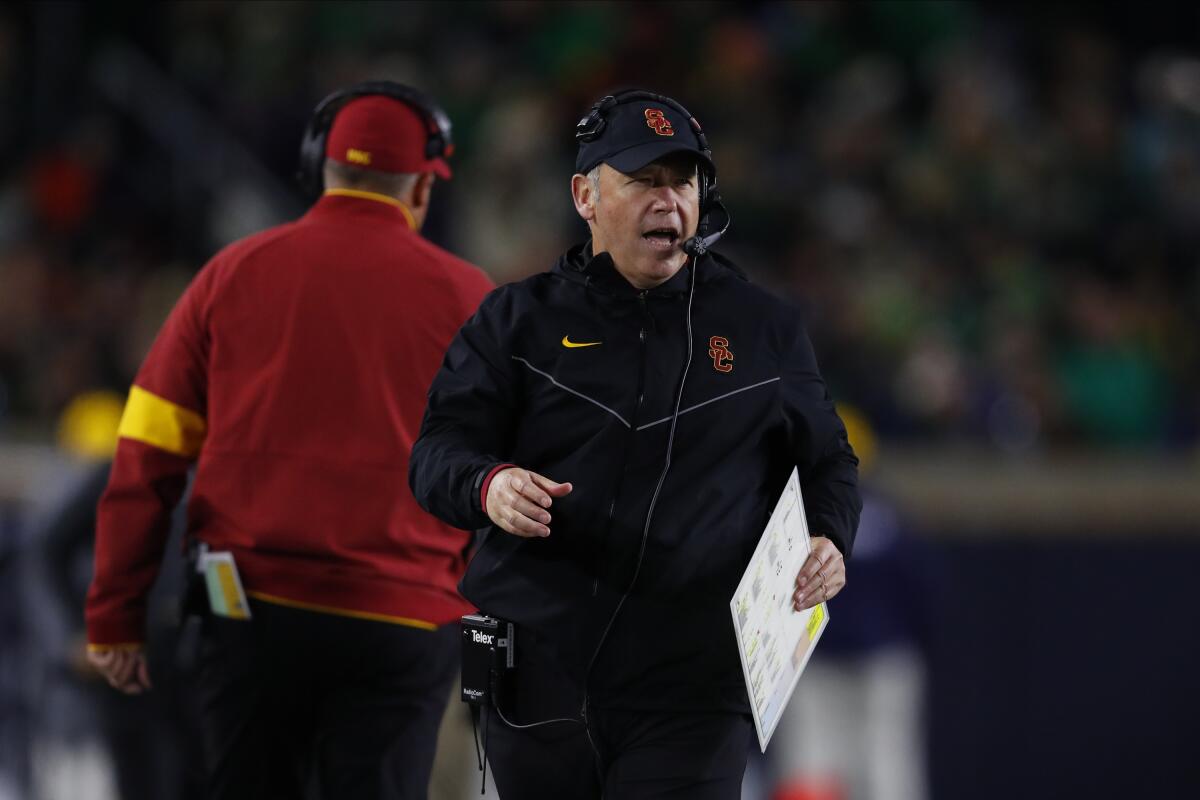
âI like the aggressiveness,â Jackson said of Pendergastâs scheme. âI donât want to sit around. I just want to get after it.â
But elsewhere, the numbers donât suggest much in the way of progress on defense. In spite of using more stout fronts, USCâs run defense has actually regressed in a substantial way this season. Its 4.6 yards per carry allowed ranks ninth in the Pac-12 and 87th in the nation. Its 170 rushing yards allowed per game is the worst for the program in the past decade by a wide margin.
Asked about that decline, Pendergast said, âI donât look at the numbers.â
âI just look at the guys we have out here, and weâre coaching them up to get better,â he continued. âThis is a group I really like, and they really like football. But it is a young group that weâre developing, that weâre bringing alone, and thatâs the exciting part about it.â
Last week, in Tempe, Pendergastâs defense did seem to take a step forward as it focused primarily on stopping the Sun Devils run game. USC stymied dynamic Arizona State back Eno Benjamin in a narrow victory, holding him to a career-low 2.6 yards per carry.
As he praised his run defenseâs performance, the normally even-keeled Pendergast also lamented how injuries had continued to impact the unit. The frustration in his voice was evident.
âItâs been that way all year,â Pendergast said last Saturday. âItâs been a revolving door.â
As USCâs quarterback sat in the medical tent and his center was sidelined because of a strained calf, backups took the reins and helped the Trojans earn a win.
This season, USCâs defense has had to weather extended absences from both starting defensive ends, one starting defensive tackle, two starting linebackers, three top cornerbacks, and its best safety. That lack of continuity, Pendergast believes, has been his biggest issue on defense.
âWhen you look at the different changes ⌠itâs going to affect you,â Pendergast said. âDefense is a communication-oriented side of the ball. Guys have to feel good working together, where you make a call during the game, you look over and somebody looks at you and says, âI got it.â Itâs continuity-based. Defense is about reaction.â
Four years ago, with USCâs defense in similarly dire straits, the reaction of its newly promoted coach was to fire the defensive coordinator, in hopes of starting anew.
Now, with Helton under fire and his own future as coordinator in question, Pendergast said he hasnât paid much attention to any reactions outside of USCâs building.
âI just come out and coach every day,â Pendergast said. âI donât listen to anything on the outside. I try to do my best every single day. So, you know, it is what it is.â
More to Read
Go beyond the scoreboard
Get the latest on L.A.'s teams in the daily Sports Report newsletter.
You may occasionally receive promotional content from the Los Angeles Times.

